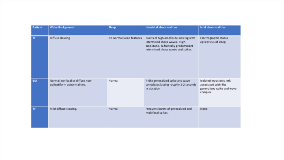Temtamy Syndrome: Three New Cases with Abnormal vEEG Findings and Intact Corpus Callosum
Abstract number :
1.136
Submission category :
3. Neurophysiology / 3A. Video EEG Epilepsy-Monitoring
Year :
2018
Submission ID :
497483
Source :
www.aesnet.org
Presentation date :
12/1/2018 6:00:00 PM
Published date :
Nov 5, 2018, 18:00 PM
Authors :
Matthew Protas, SUNY Upstate Medical University; Yelena Roshchina, Hackensack University Medical Center; and Eric Segal, Northeast Regional Epilepsy Group
Rationale: Temtamy Syndrome (TS) is a rare disorder characterized by intellectual disability with or without craniofacial dysmorphism, ocular coloboma, or abnormal corpus callosum. It effects roughly 50 children of consanguineous Palestinian families. Methods: We present a consanguineous Palestinian family with two females (age 4&7) and one male (age 6) siblings affected by TS with an alternative splicing mutation of the 12p13.31 at the open reading frame 57. Results: Both the 6-year old male and 4-year old female presented atypically with no corpus callosal abnormalities. The male presented atypically with myoclonic epilepsy, which represents the second time this type of sz has been reported in TS. On EEG the 7 year old female was found to have electrographic status epilepticus of sleep. Conclusions: We present an interesting familial report of TS with atypical radiographic and electroencephalographic features that broaden this syndrome’s spectrum and expand on the previously poorly understood phenotype. In addition, conventional imaging studies demonstrate atypical intact corpus callosum for a 12p13.31 solo mutation, electrographic status epilepticus of sleep and myoclonic epilepsy are both rare vEEG findings that broaden the phenotypic picture of TS. Funding: None

.tmb-.png?Culture=en&sfvrsn=e334f7c6_0)